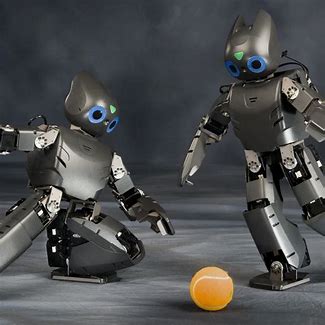Humanoid robots
Human-Like Robots Are Often
Overestimated to Be Thinkable: Research
Keywords: Robots, artificial intelligence, human-like robot, a humanoid
robot, chatbots
Meta: A new research on humanoid robots throws light on how
humans exposed to humanoid robots believe in their intentionality. What
does it hold for future artificial intelligence-enabled robots?
SM: A new research on humanoid robots throws light on how humans
exposed to humanoid robots believe in their intentionality. What does it hold
for future artificial intelligence-enabled robots?
H1: The experiment proved that humans when exposed to even short
experiences with humanoid robot induces a “like me” impression
Humans are not done yet with foraying into new realms of artificial intelligence. They have every technology at their dispense. With voice
assistants like SIRI and Alexa which have answers to every weird and random question
or the self-driving cars which do not need assistance, seems we have reached
the limits of technology. Or, do we think so? The recent debate around the
possibility of a chatbot like LAMDA gaining sentience is more proof that this
question will be eternal. To add to this argument, the study published by
American Psychological Association proves that humans exposed to robots that display human-like traits make them believe robots are capable of thinking and acting on their own beliefs and
desires rather than on their programs. What does this research hold for
understanding the extent to which a robot can influence human lives?
Agnieszka Wykowska, Ph.D., a principal investigator at the
Italian Institute of Technology and lead author of this study, said, the experiment
was intended to study, in a series of three experiments, if humans would adopt an
intentional stance when allowed to interact with a human-like machine vis-à-vis
robots having machine-like behavior. The experiment
proved that humans when exposed to even short experiences with humanoid robot induces a “like me” impression. The experiments included close human-robot interactions
through socializing activities. Around 119 participants were studied, through
three experiments, how their perception of the human-like robot iCub changed
before and after.
The researchers remotely controlled iCub in the first two
experiments to make it sound more affable, and friendly, and made it ask random
questions. The robot, equipped with cameras in the eyes, could make eye-to-eye
contact with participants recognizing their faces clearly. They watched videos
together during which the robot would react with natural sounds, and make faces
with expressions of different emotions. In the third experiment, the
participants were treated to a rather machine-like iCub using similar
activities. With deactivated cameras, iCub couldn’t make an eye-contact or
recognize faces. The robot responded only in beeps and aimless body movements
unlike in the previous experiment. Instead of wishing people it blurted out
only recorded sentences, about its calibration process. The participants who
got to interact with a human-like robot rated its action as more intentional than
the people who were exposed to a machine-like robot. Agnieszka Wykowska
concluded through these experiments that it is not enough for humans to
interact with robots to consider them human, but the human-like behavior that
counts, for them to be counted as bots with intentions. She was hopeful of the
prospect of her findings being used in designing robots in the future,
particularly in determining contexts in which social bonding and defining
intentionality are necessary. She says, “Social
bonding with robots might be beneficial in some contexts, like with socially
assistive robots. For example, in elderly care, social bonding with robots
might induce a higher degree of compliance with respect to following
recommendations regarding taking medication.” In earlier research published in 2021, titled
“Robots as the Mirrors of Human Minds”, underlining the role that robots can
play as a tool for understanding human cognition, she says, “Robots can inform us about our
cognitive mechanisms or, in the role of embodied computational models, can
generate new theoretical predictions regarding the workings of the human brain.”
This implies robots if designed in their right contextual framework, can open
the ways to finding the optimum point for a robot’s thinking ability.

Comments
Post a Comment